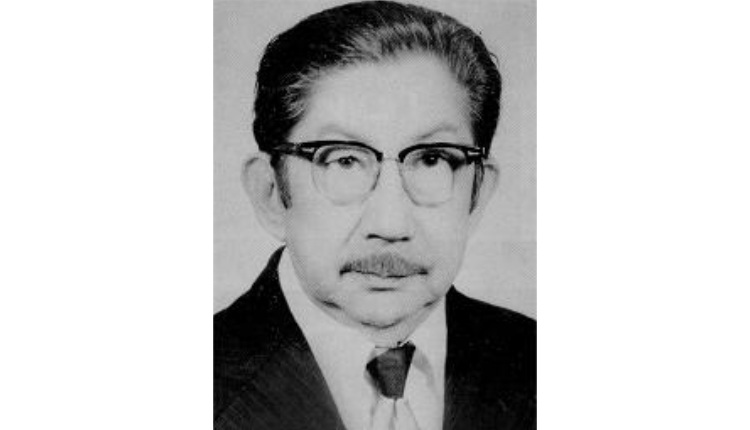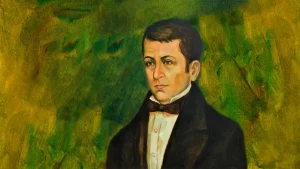Biography of José Antonio Velásquez – Primitivist Painter of America

José Antonio Velásquez was a self-taught Honduran artist. He was born on February 8, 1906 in the department of Valle. In 1930 he moved to San Antonio de Oriente, Francisco Morazán who would offer him in the following years a universe of colors and shapes to capture them in a work that would travel much of the world.
He was a telegraph operator and a hairdresser, a self-taught painter and a lover of modesty.
His work depicts typical Honduran street scenes, clearly stylized and frequently portrayed from a high vantage point and rendered in the rich colors endemic to Central American culture.
Often praised as one of America’s first Primitive painters, his style is associated with Naive Art. In addition to his best-known paintings, he also worked in photography and sculpture on various occasions.
Velásquez garnered critical acclaim during his lifetime and was included in the first Biennial of Latin American Art in 1951. His life and art served as the inspiration for a film titled The World of a Primitive Painter in 1973 , which increased his exposure and acceptance in all the world. Born on February 8, 1906 in Charity, Honduras, Velásquez died on February 14, 1983.
Honduras has become known for many world-class artists, but the painter who is perhaps the most recognized is called José Antonio Velásquez, favorite son of San Antonio de Oriente.
José Antonio was born in Caridad, department of Valle, where he spent his childhood and which he left following the death of his parents; Later, looking for better life options, he emigrated to the north coast where he worked as a barber and telegraph operator and it was thanks to that trade that he got a job in San Antonio de Oriente, an old mining town of Francisco Morazán.
As well as love at first sight, José Antonio fell in love with San Antonio de Oriente, a place that became his inspiration, his «primitivist» painting style was characterized by representing scenes of everyday life, drawing in detail and «natural» color. ” each element of his paintings, tile by tile, stone by stone, pine by pine, his works having the personal stamp of including the stray dog, the priest and the ladies of the town; that exquisiteness of his works earned him to be considered in his time as «The First Primitivist Painter of America».
José Antonio, although he was not born in San Antonio, became his favorite son since thanks to his work, the image and name of San Antonio de Oriente were known throughout the world; Presidential invitations to Washington and Costa Rica, exhibitions in renowned galleries in Spain, Portugal, France, Italy, Switzerland, Czechoslovakia, Holland, Australia, China, Japan, the former Soviet Union, Venezuela and Mexico are just part of the recognition received.
José Antonio Velásquez is today a source of inspiration for new generations of artists and is ultimately a Pride of Honduras.
It all begins with a publication in a national newspaper, on a day like today, but in 1983. The writer and journalist Filadelfo Suazo writes under the title «El Ángel Primitivo» a poem dedicated to José Antonio Velásquez, the most important painter in the history of Honduras, the first primitivist.
“The lime has gone
of all the walls
all the churches collapsed
and all the windows were closed
the tiles broke
by thousands”
Honduras was celebrating its third day of mourning before the death of Velásquez, on February 14, 1983. «At 76 years of age, he died of a heart attack, at 5:15 in the morning, in Tegucigalpa.»
Along with the current of Primitivist Art, or Naive Art, he portrayed every tree and bush he found on his way, as well as the characteristic houses with red tiles, the great church rising above the surrounding sky, the wandering priest, and a small dog running between the villagers.
The writer Rafael Heleodoro Valle would write:
“Green land, pine trees, land of numerous pine forests, under an intense blue sky, in which its flag was born. Turquoise sky, green earth, the entire biological and poetic range of the pine. And there in the depths of the pine forests, the little white villages that seem weak. This is how they are in the minimal biography of Honduras traced by its painter José Antonio Velásquez”
“The first exhibitions were presented with the sponsorship of the Metropolitan Council of the Central District and as a result, silver medals and some diplomas were awarded. Already in 1954 his fame crossed national borders, his works were seen in Germany, Spain, Italy, the United States, Mexico, Cuba, Brazil, Venezuela, the Dominican Republic, El Salvador, Nicaragua, Panama, Colombia, among others. . In 1981 he was in Costa Rica at the invitation of President José Figueres”.
The famous American actress Sherley Temple narrated the film «The World of a Primitive Painter», a documentary sponsored by the OAS that collects the adventures and work of Velásquez.
Some pieces by the painter can be seen at Banco Atlántida in Tegucigalpa. Presencia Universitaria pays this posthumous homage to who, without a doubt, is the most prominent painter that this land has had, 31 years after his death.
The Primitive Art
Primitivism, or naïve art, is characterized by self-education and the denial of academicism as a means to reach artistic manifestations less contaminated than conventional ones. It is said to be a naive, innocent art, because it aims to offer a sincere vision of the world free of artifice.
Its main characteristics are the defined contours, the lack of perspective, the volumetric sensation through the intense colors, the expressive power, among many others that claim a drawing that is not necessarily correct, rather a reflection of inner tranquility and carefreeness.



